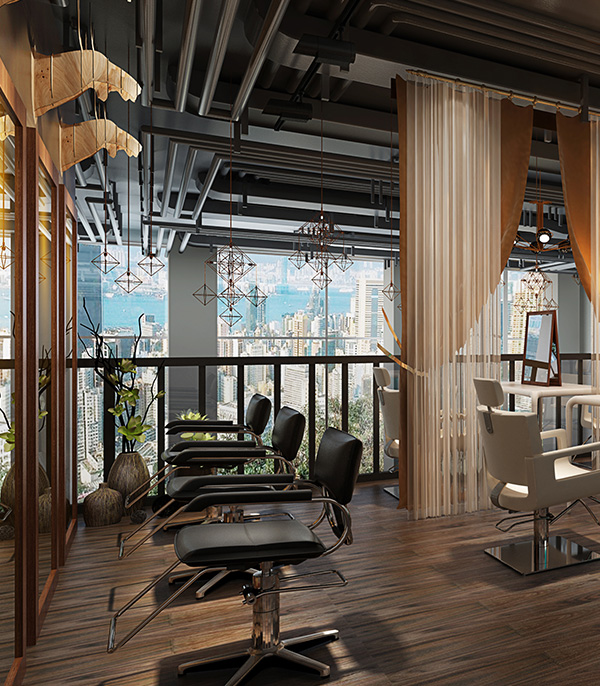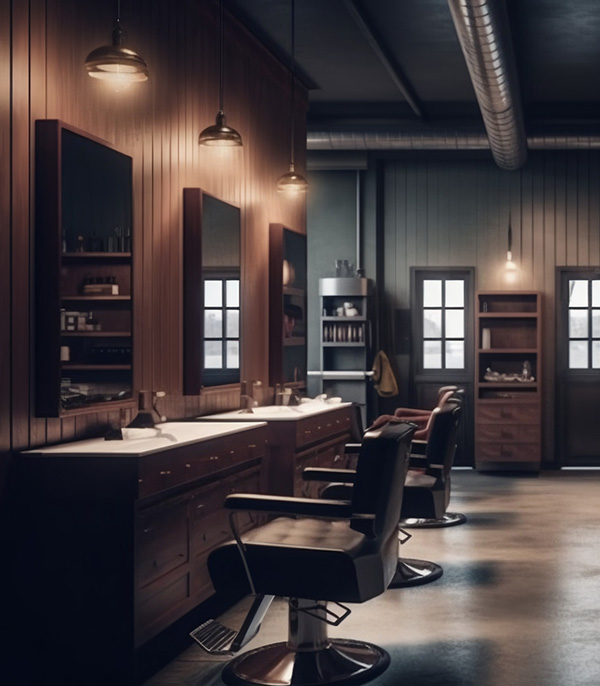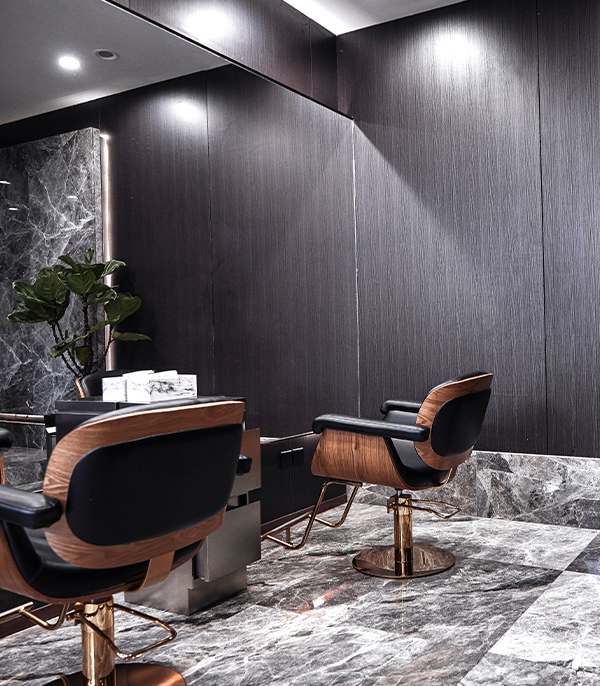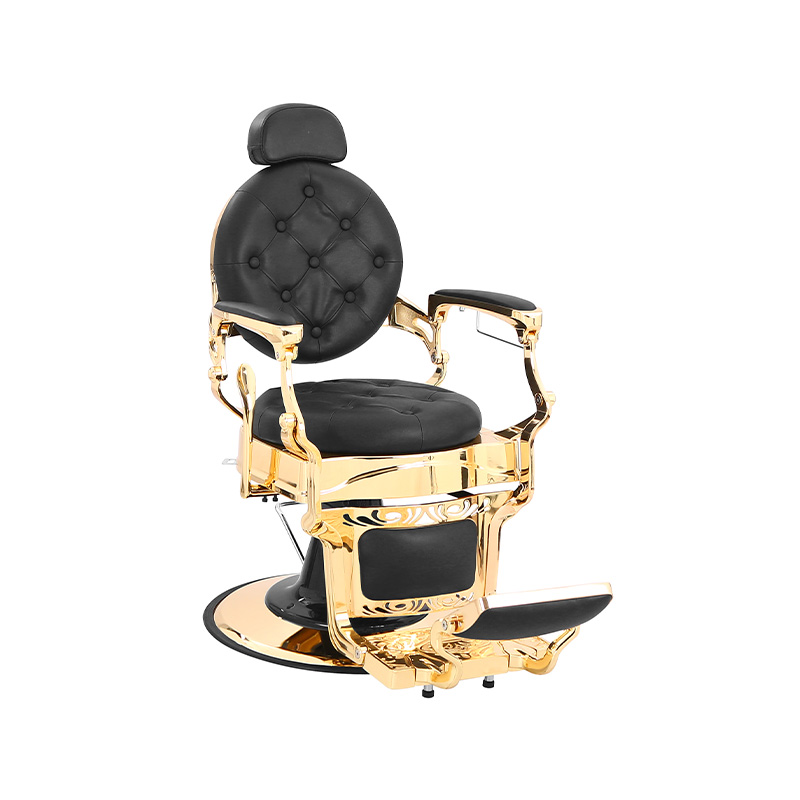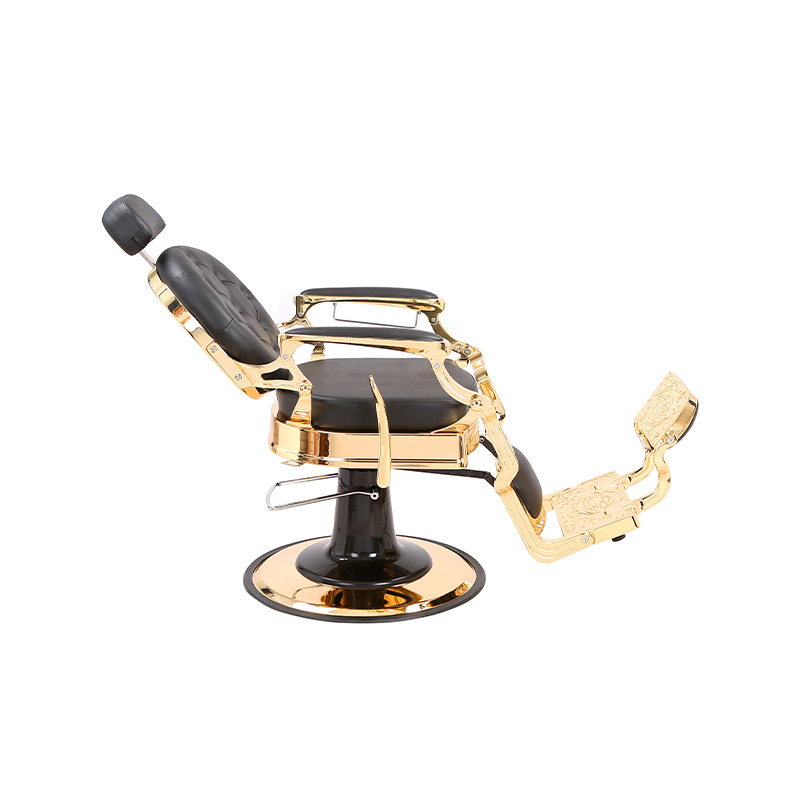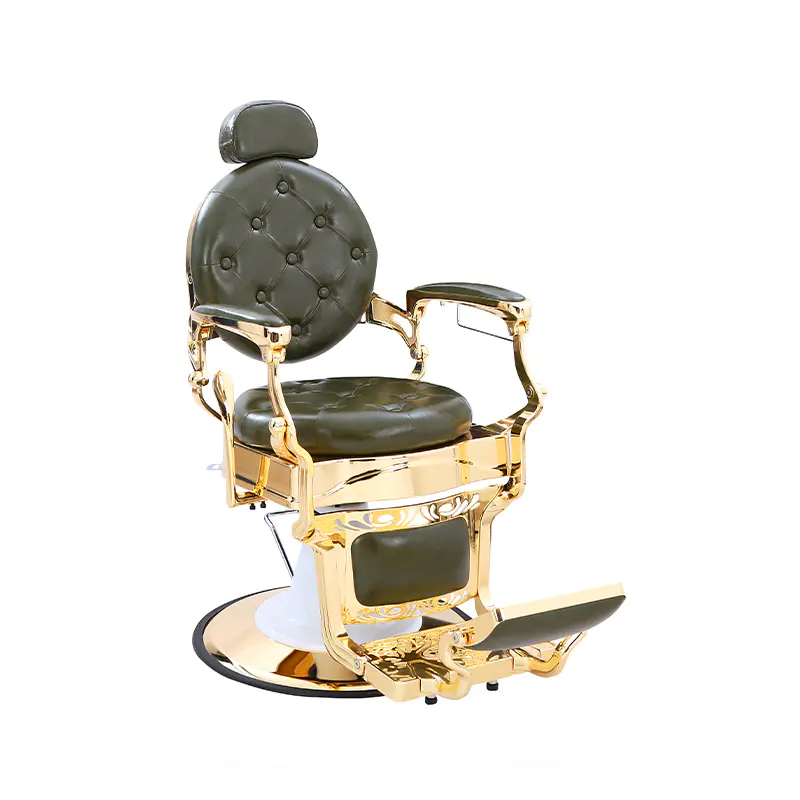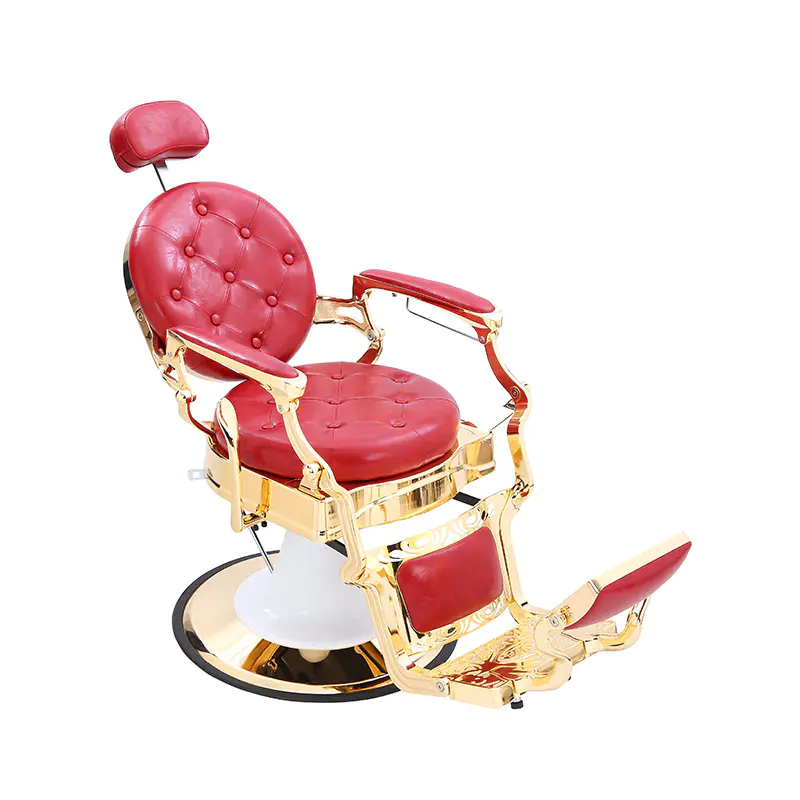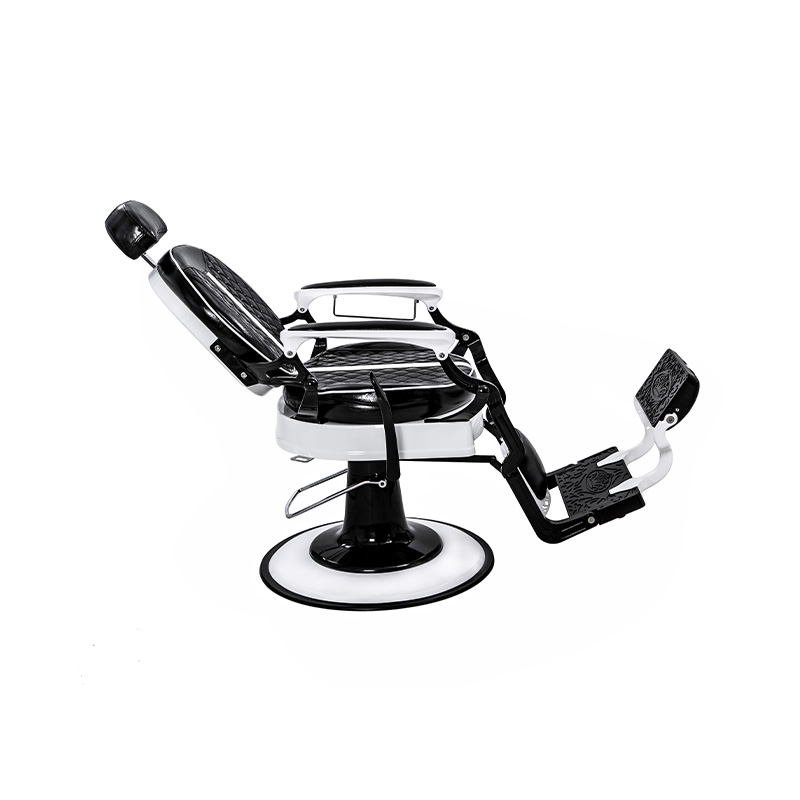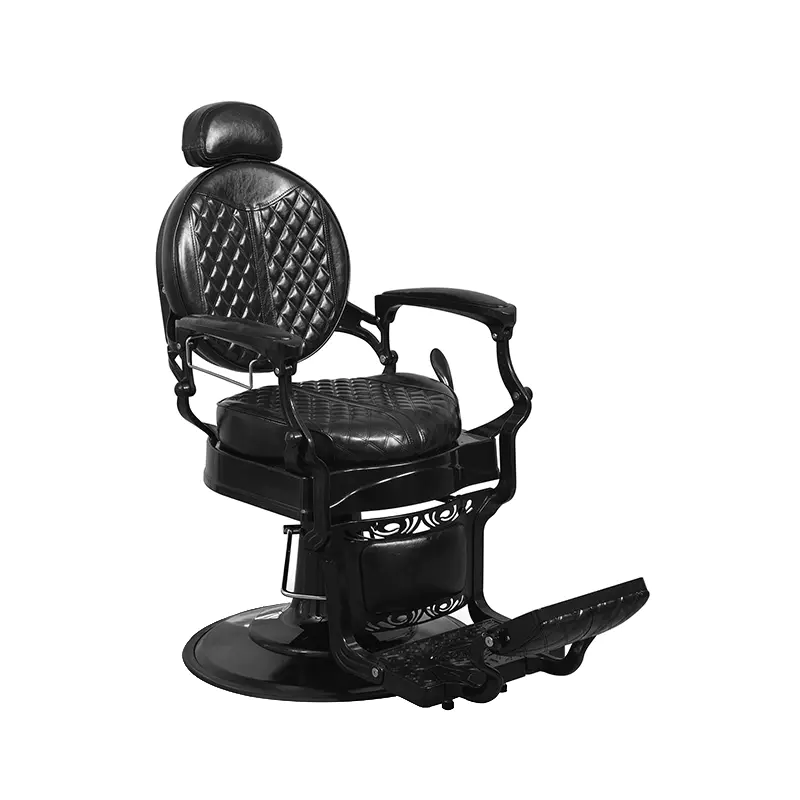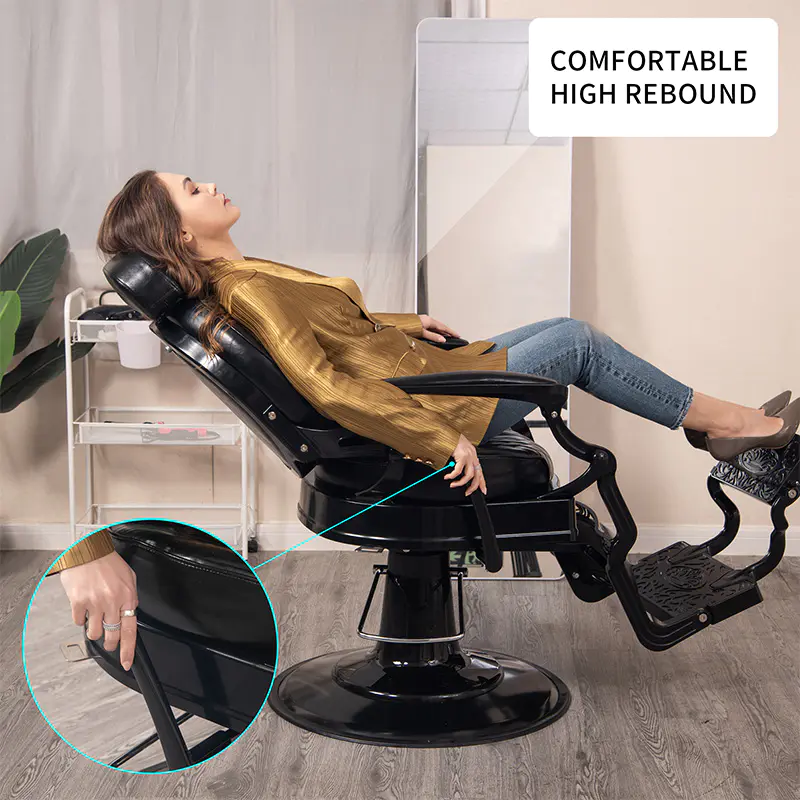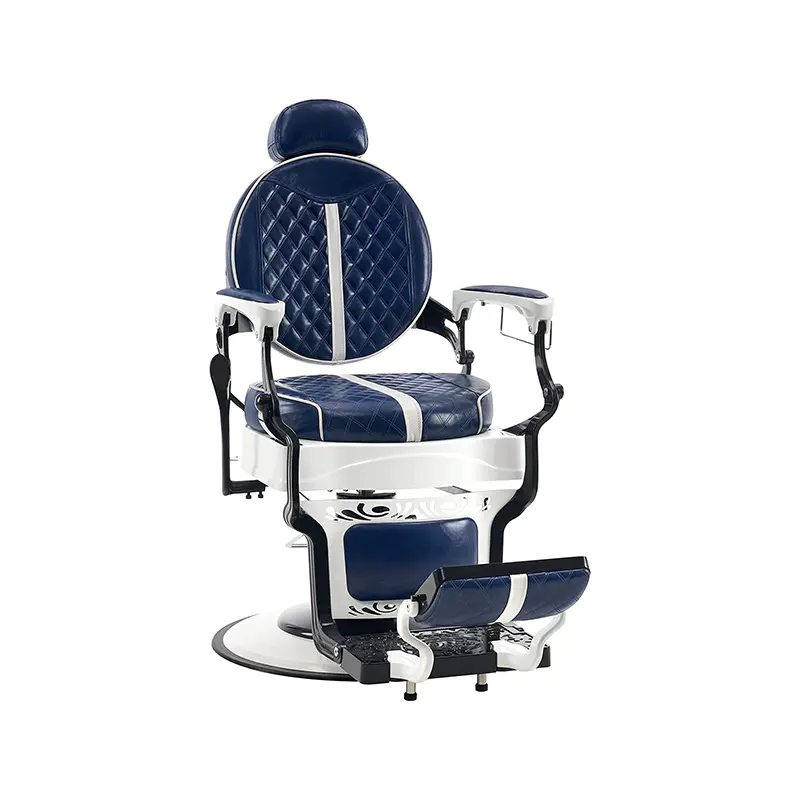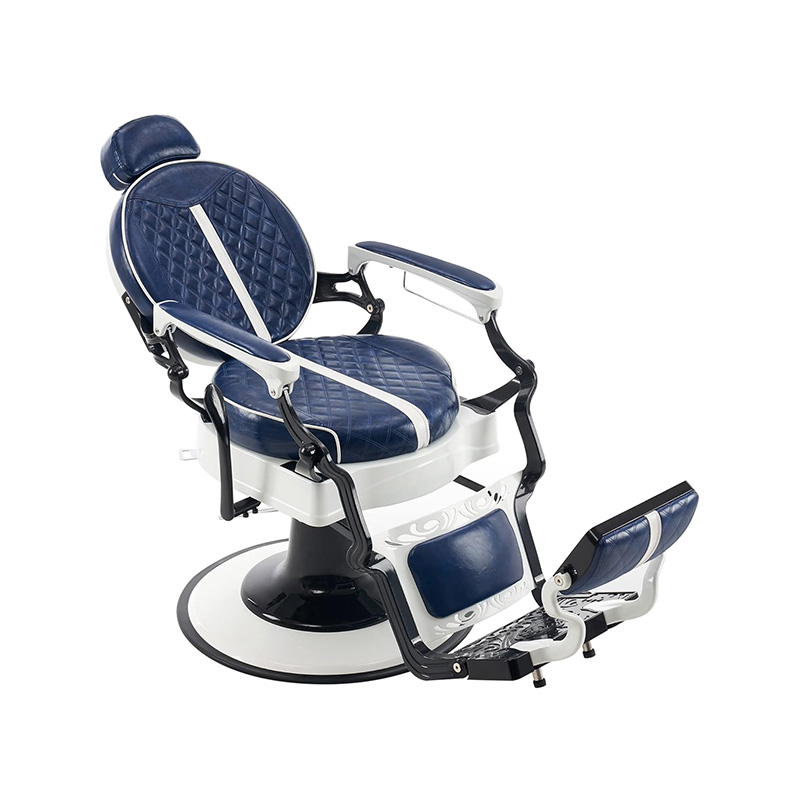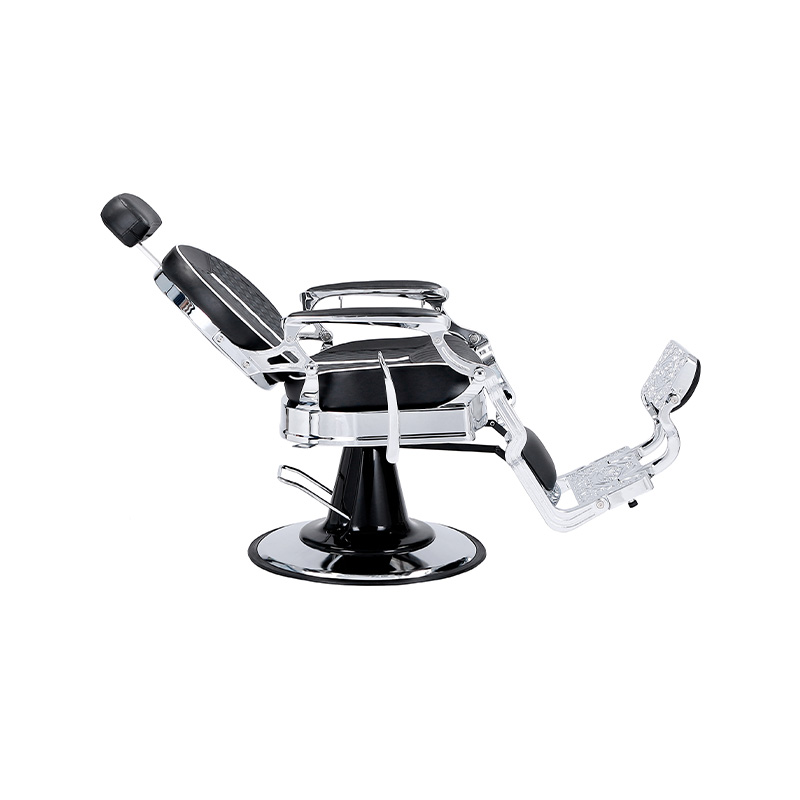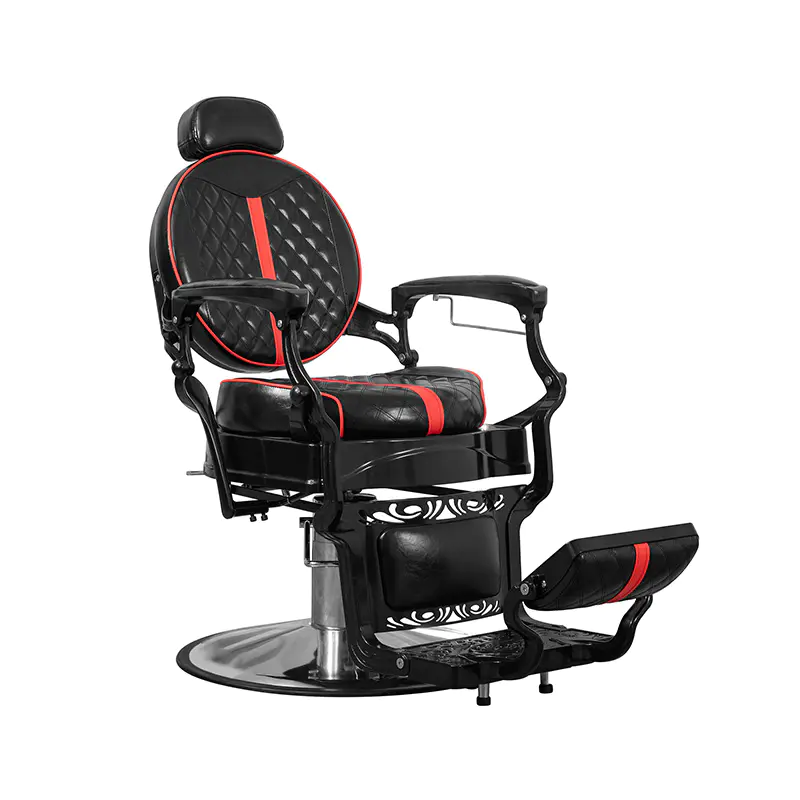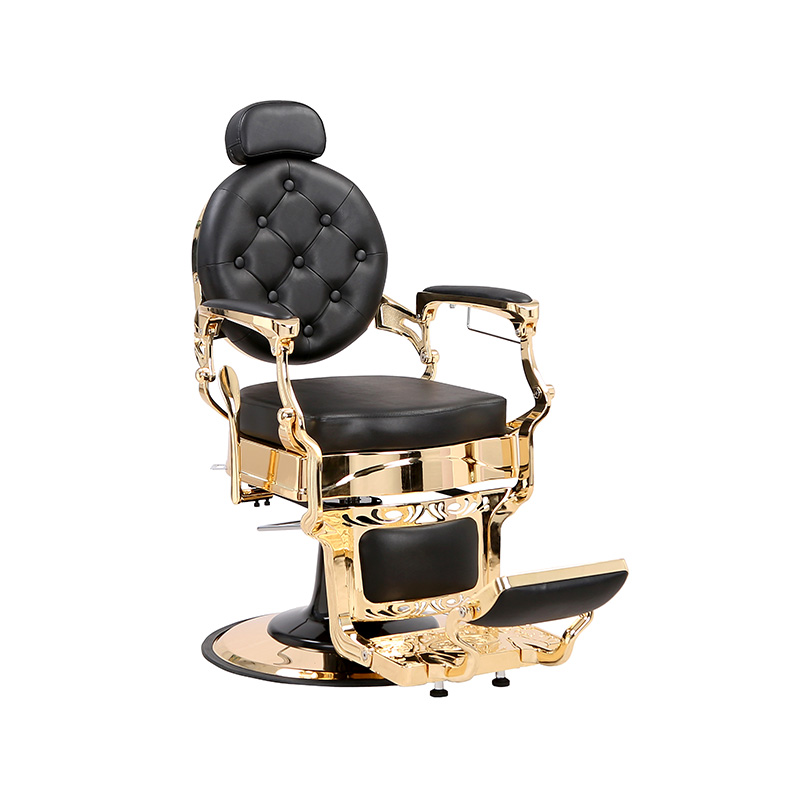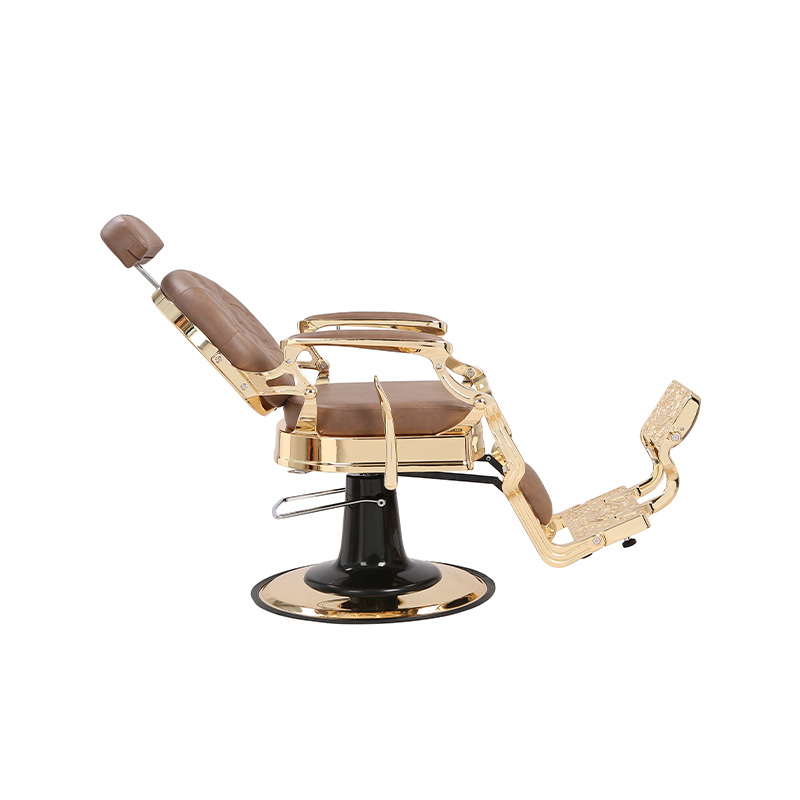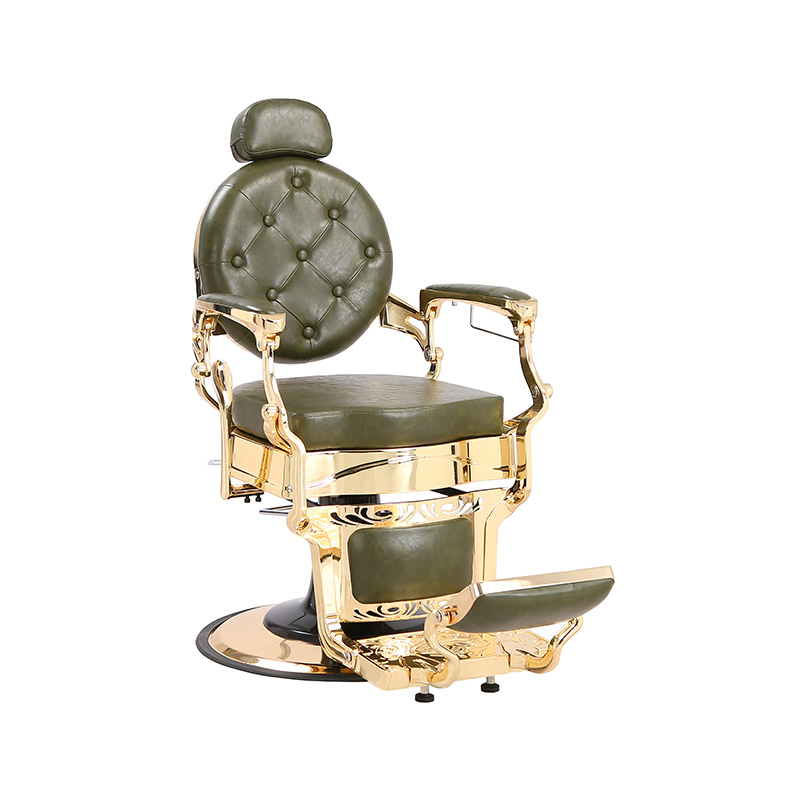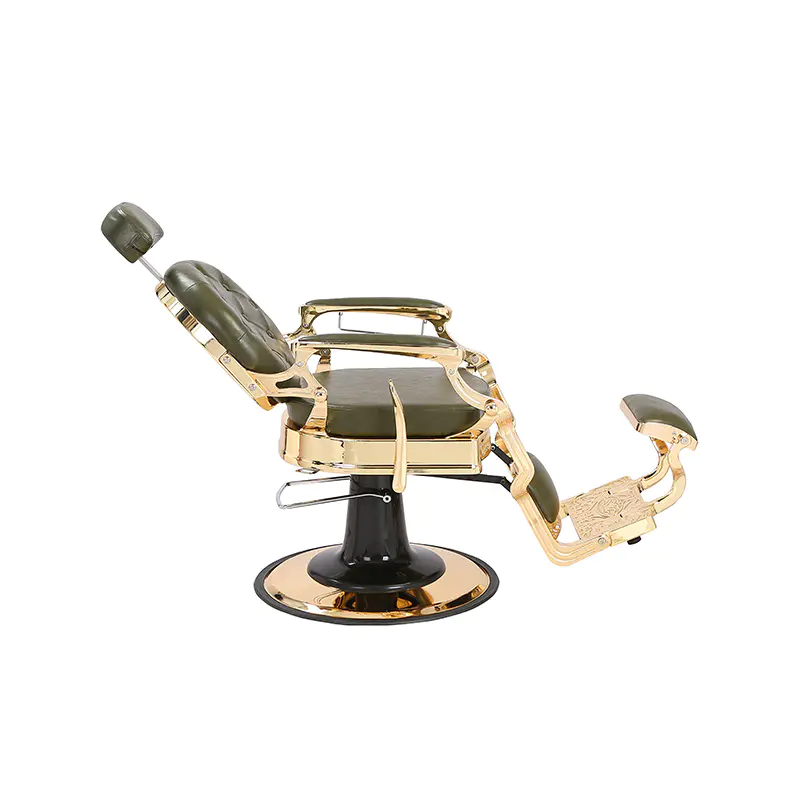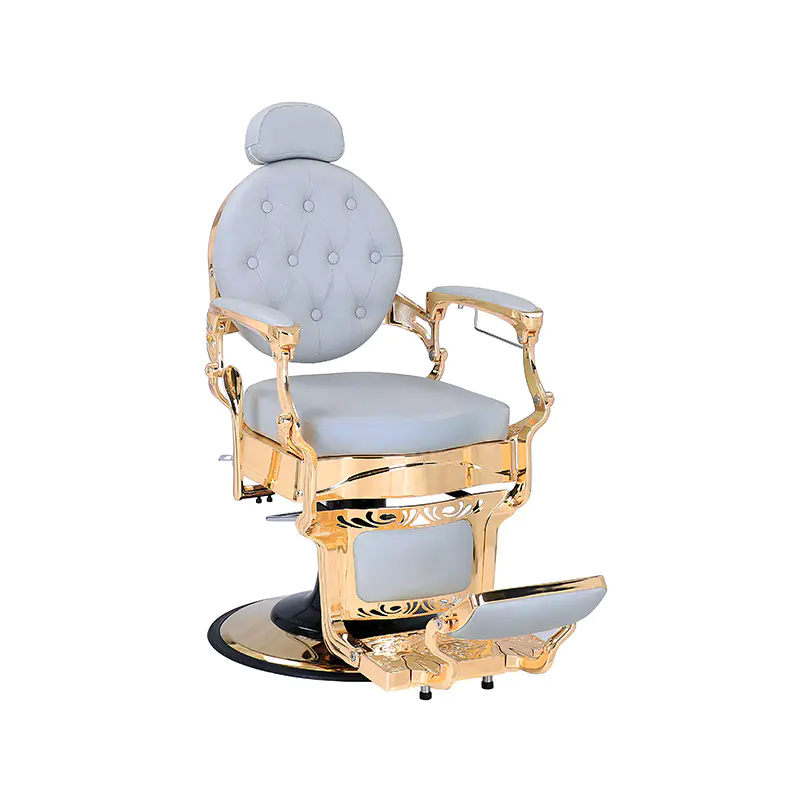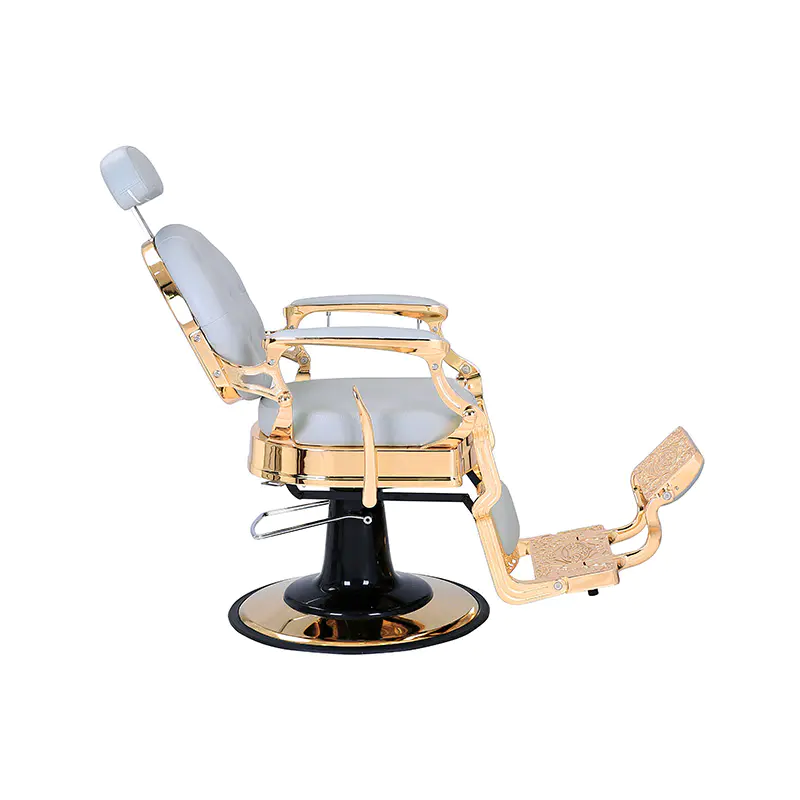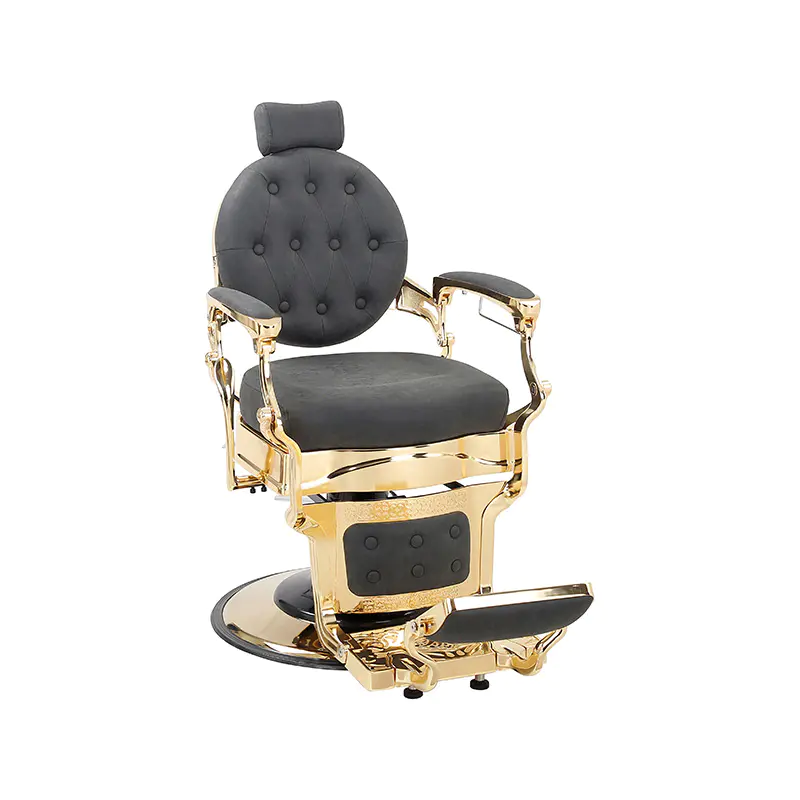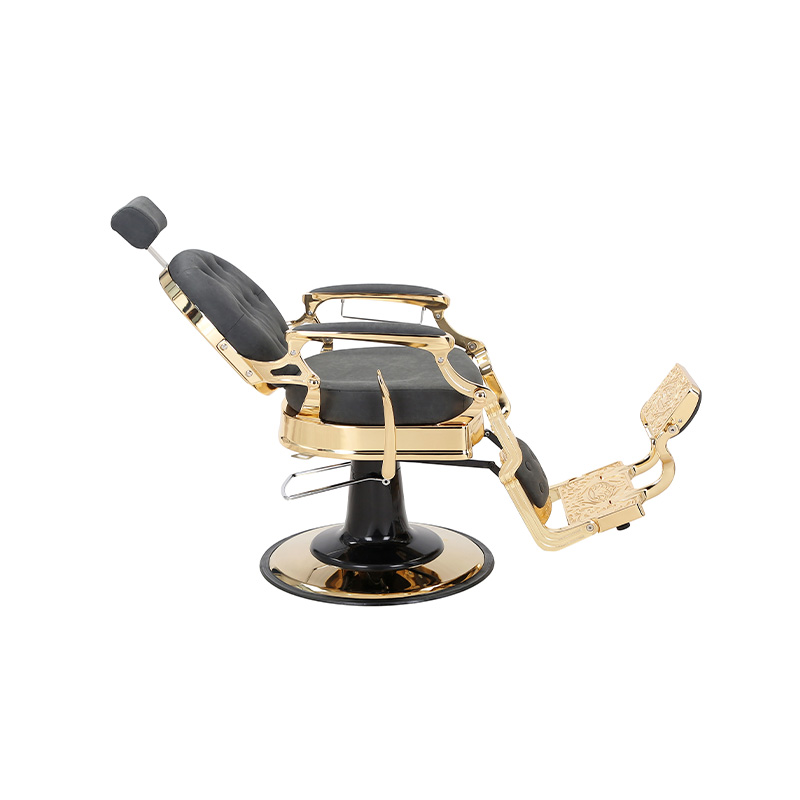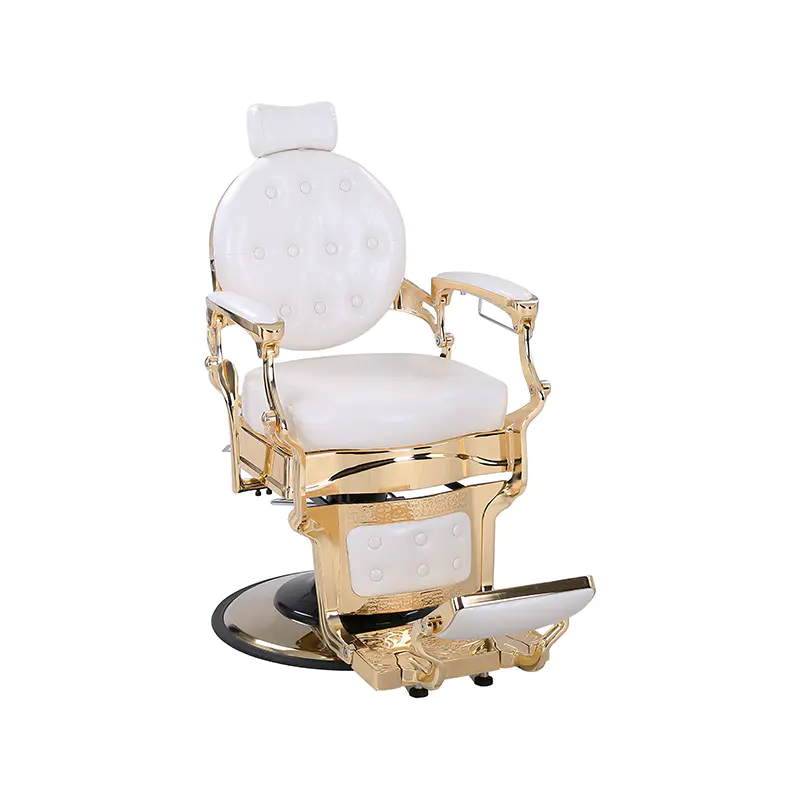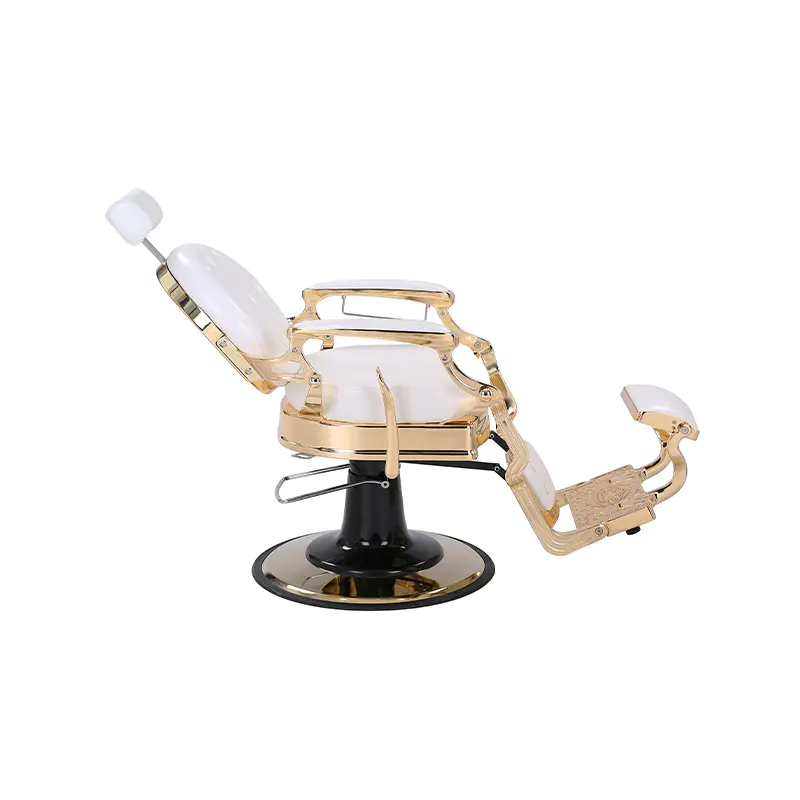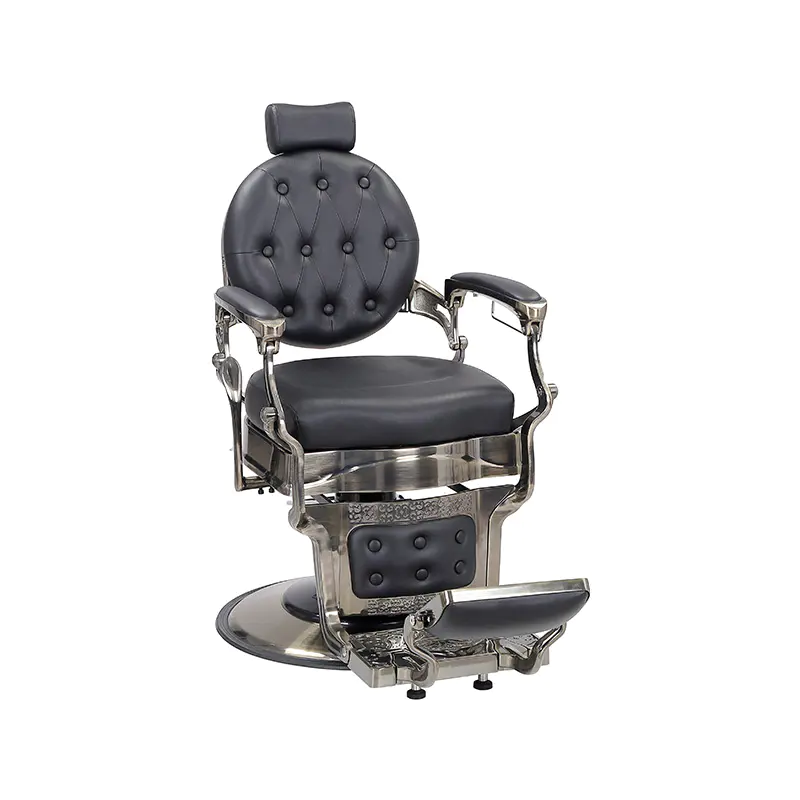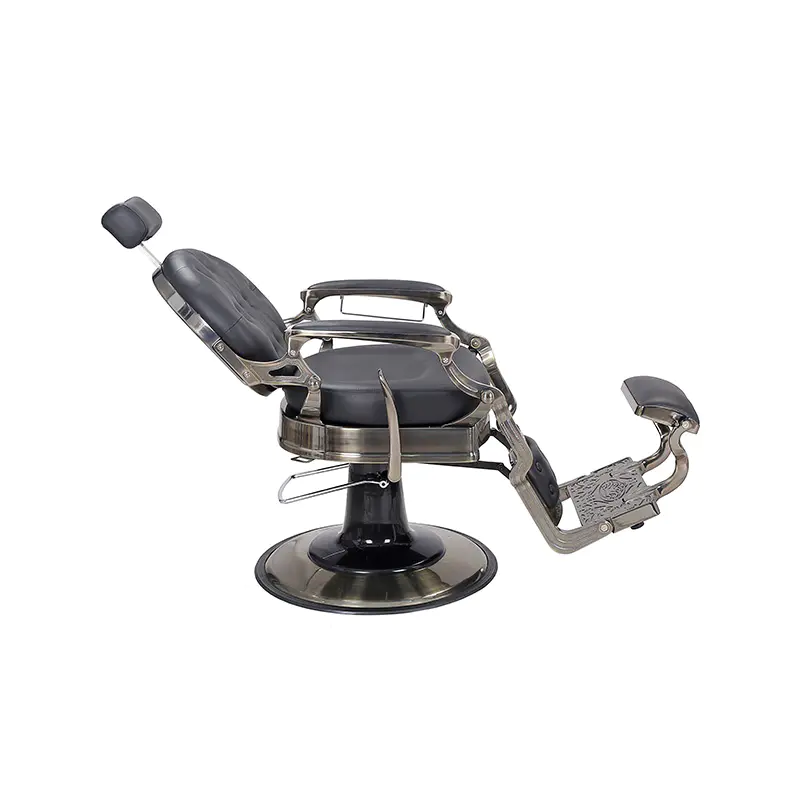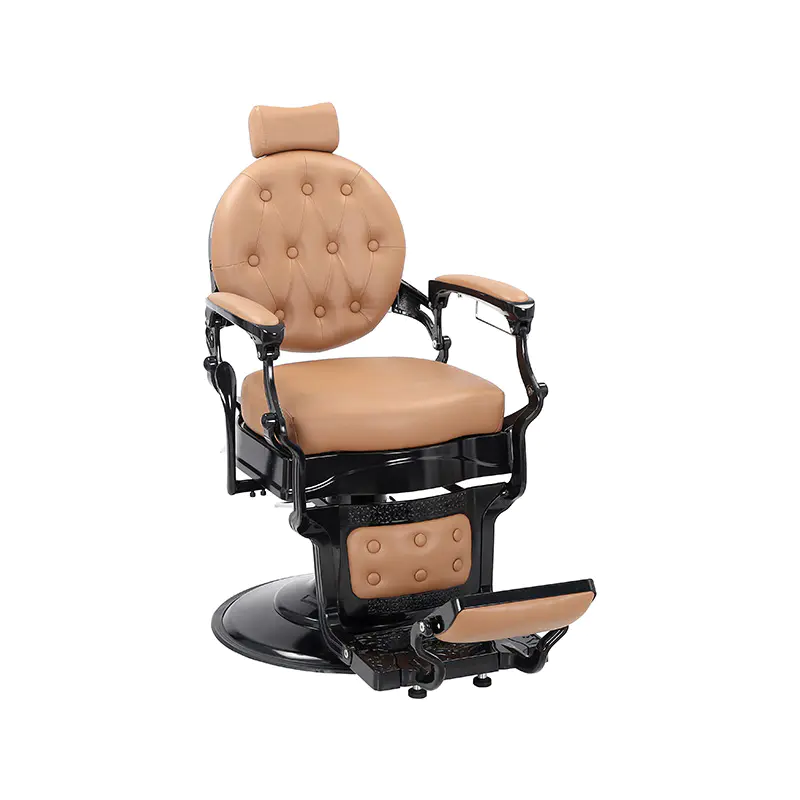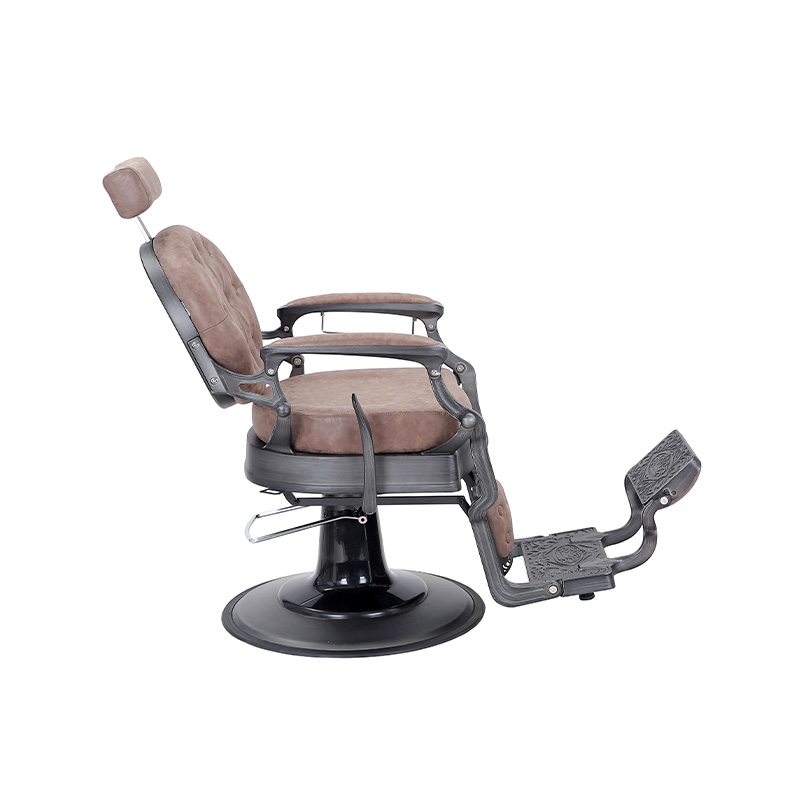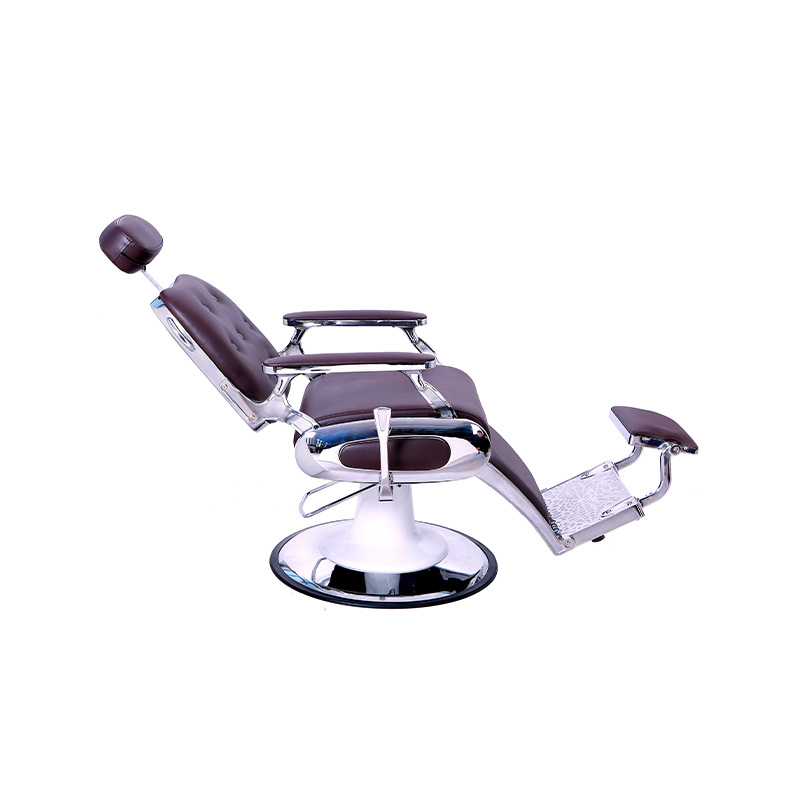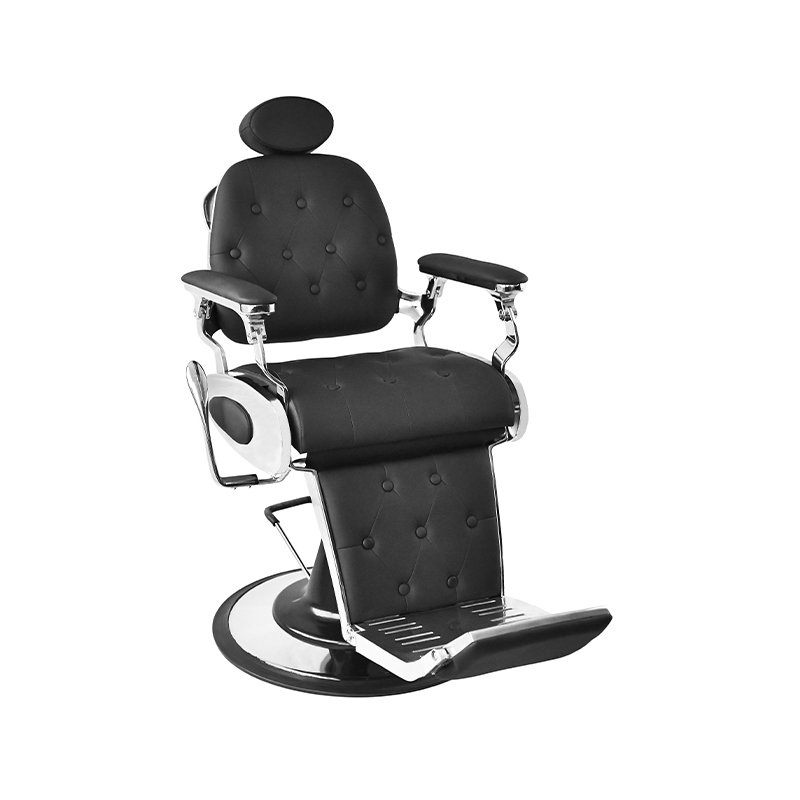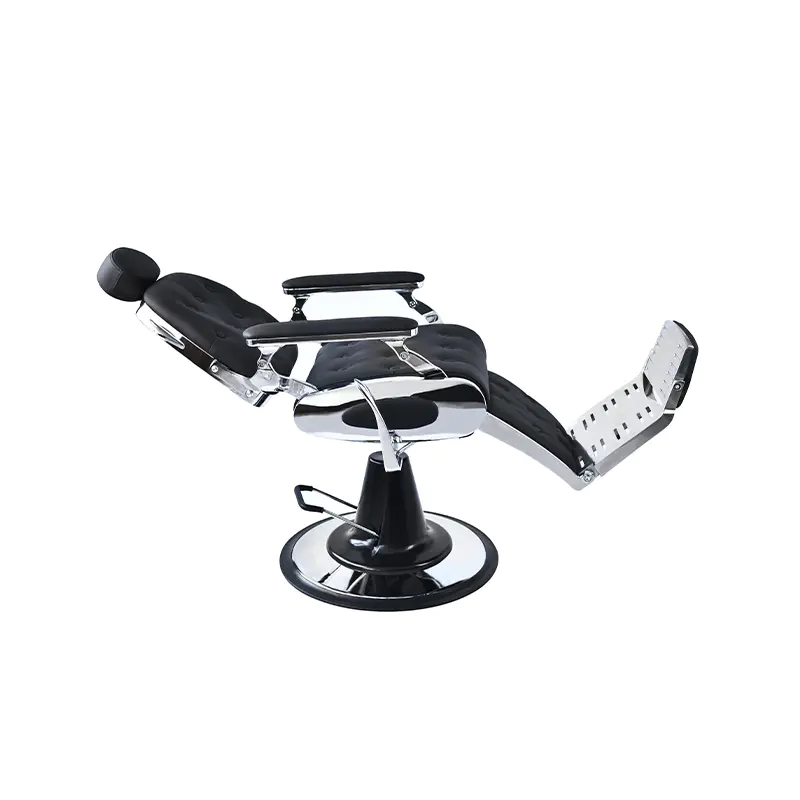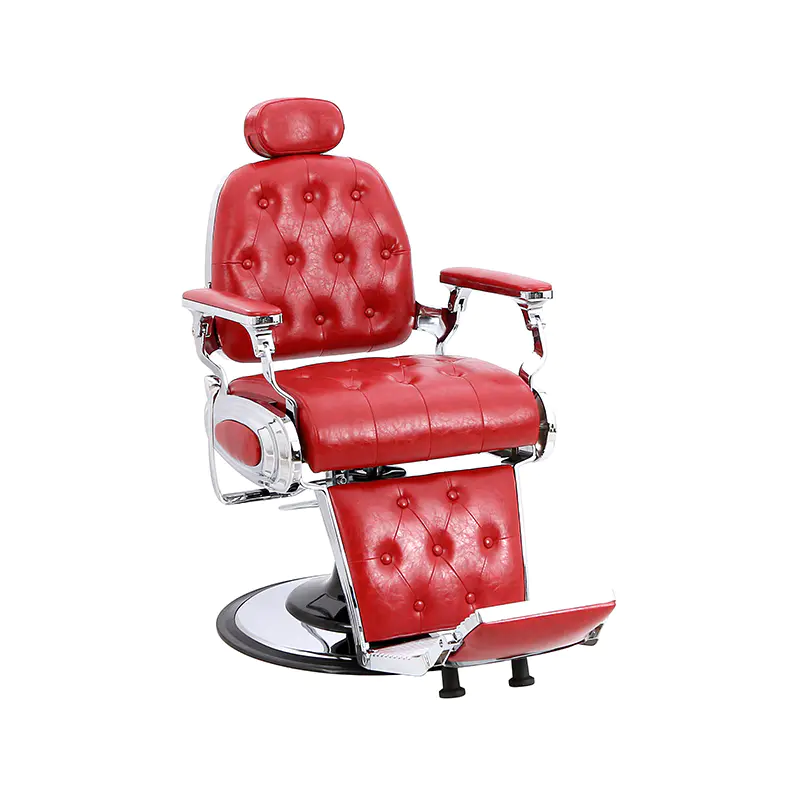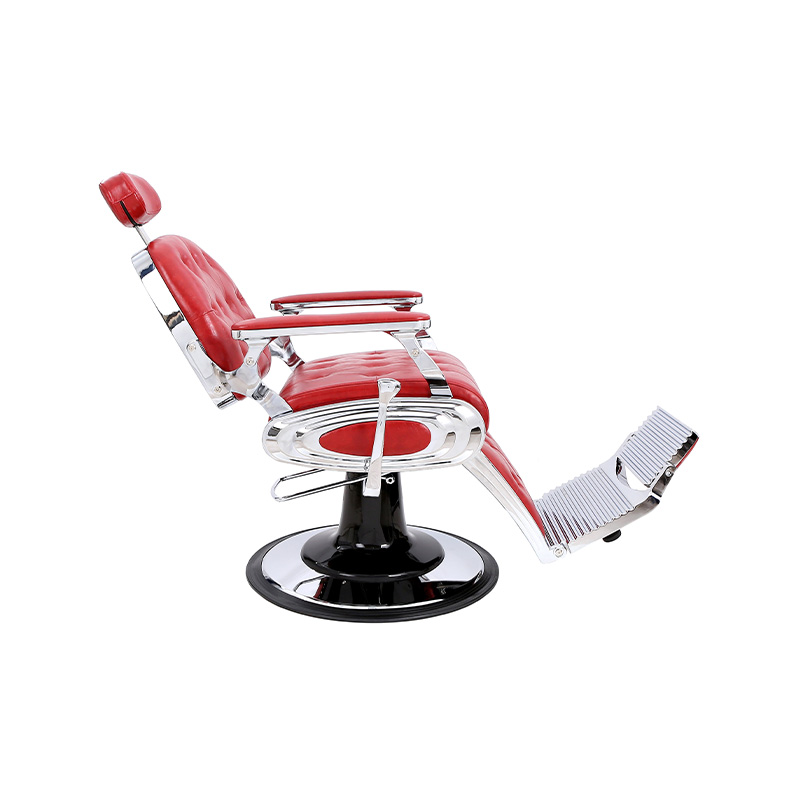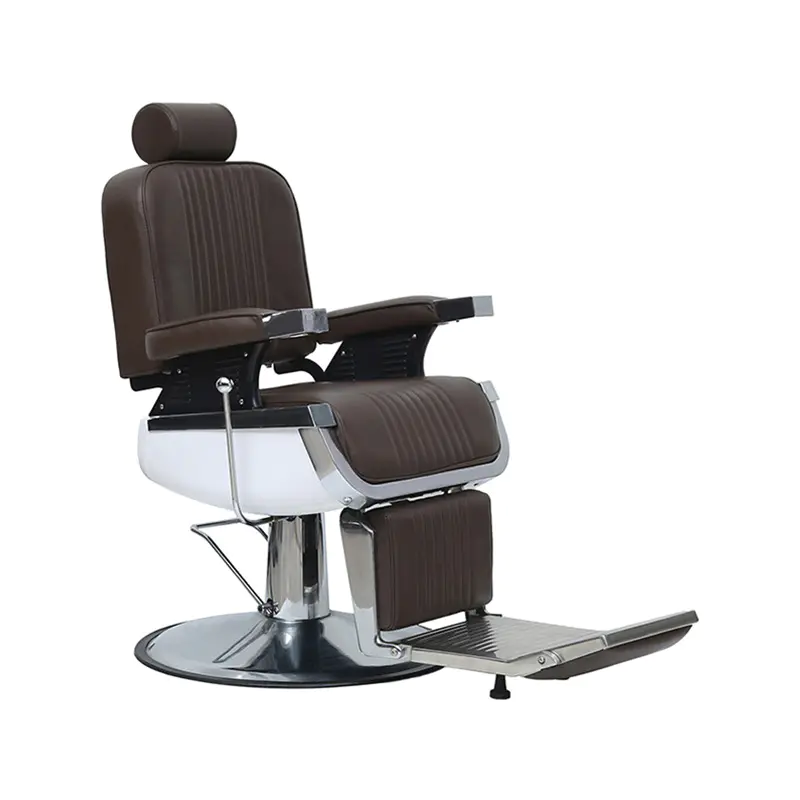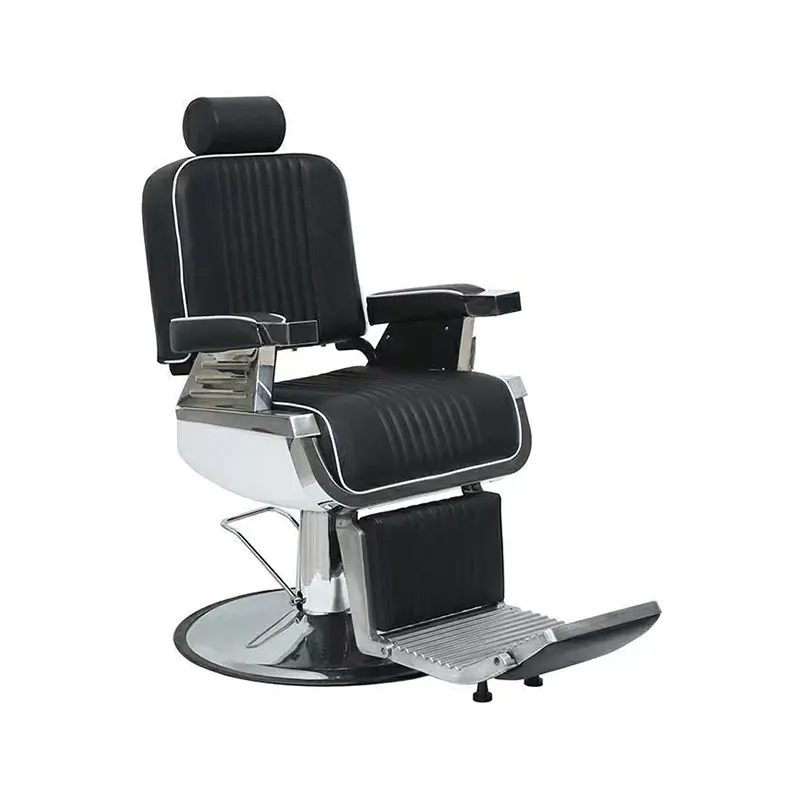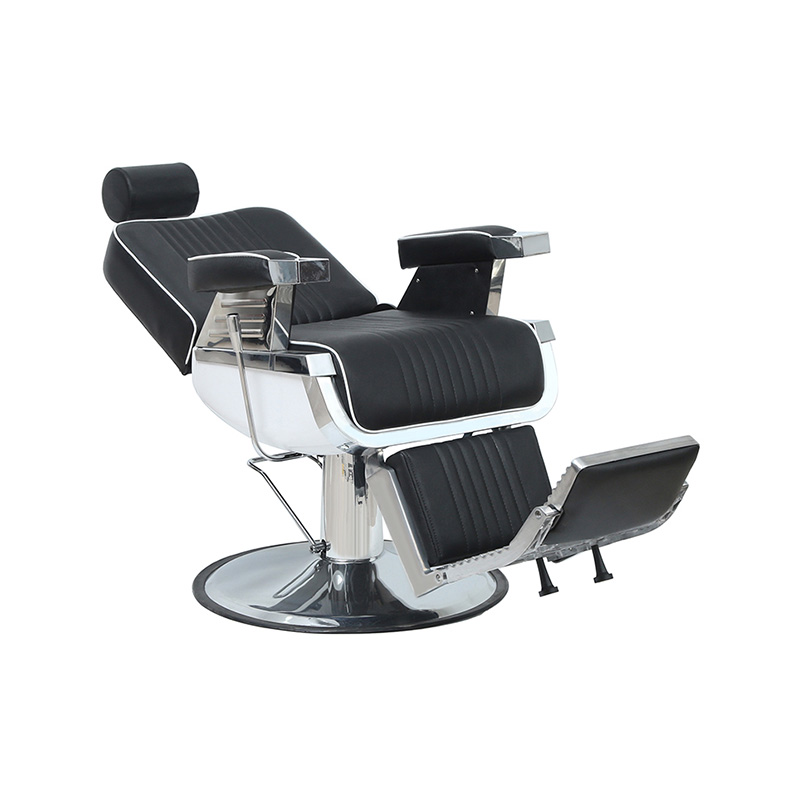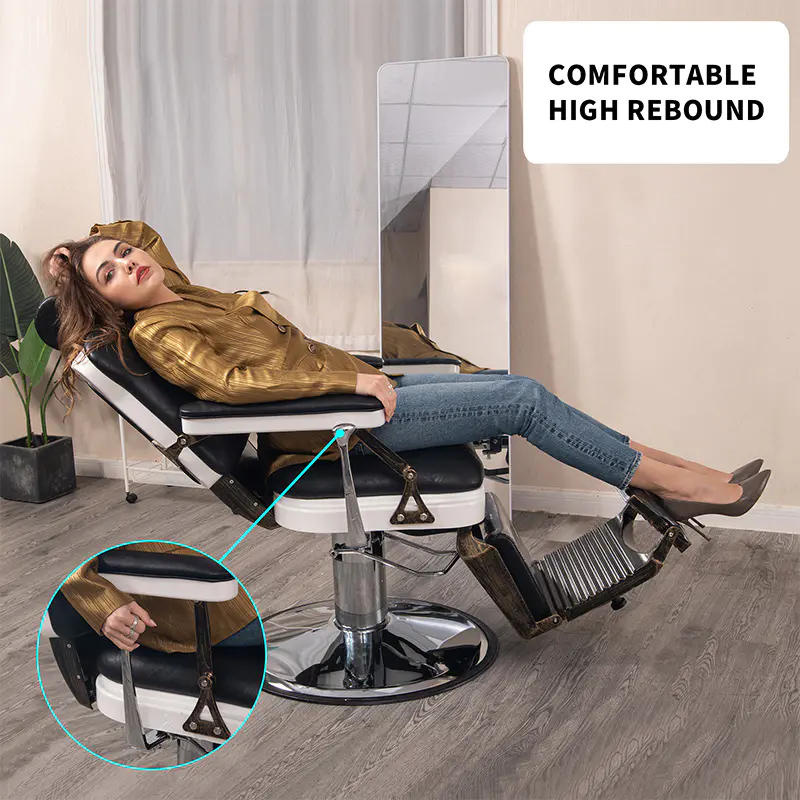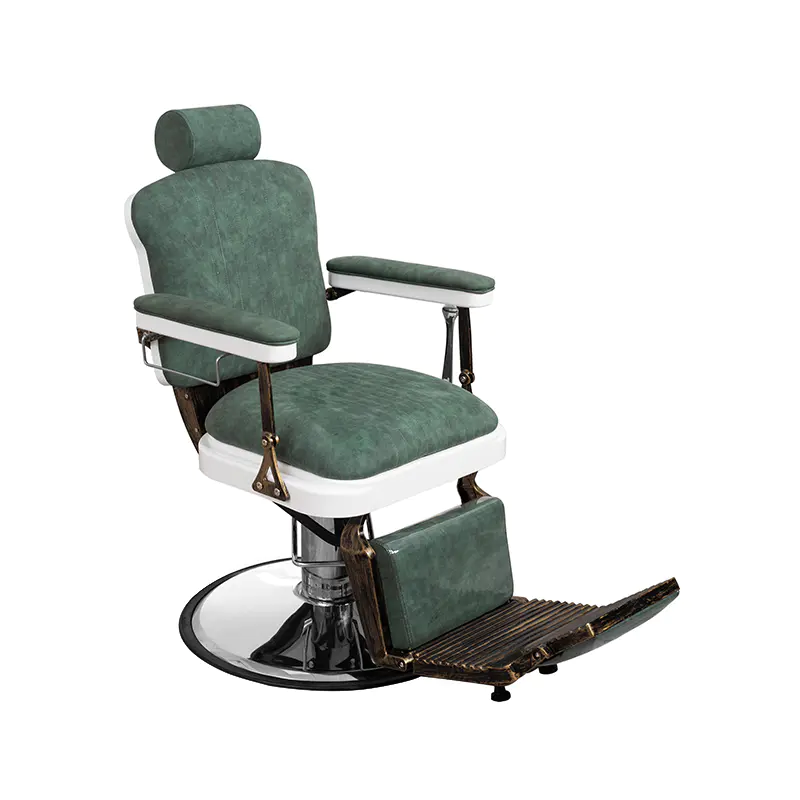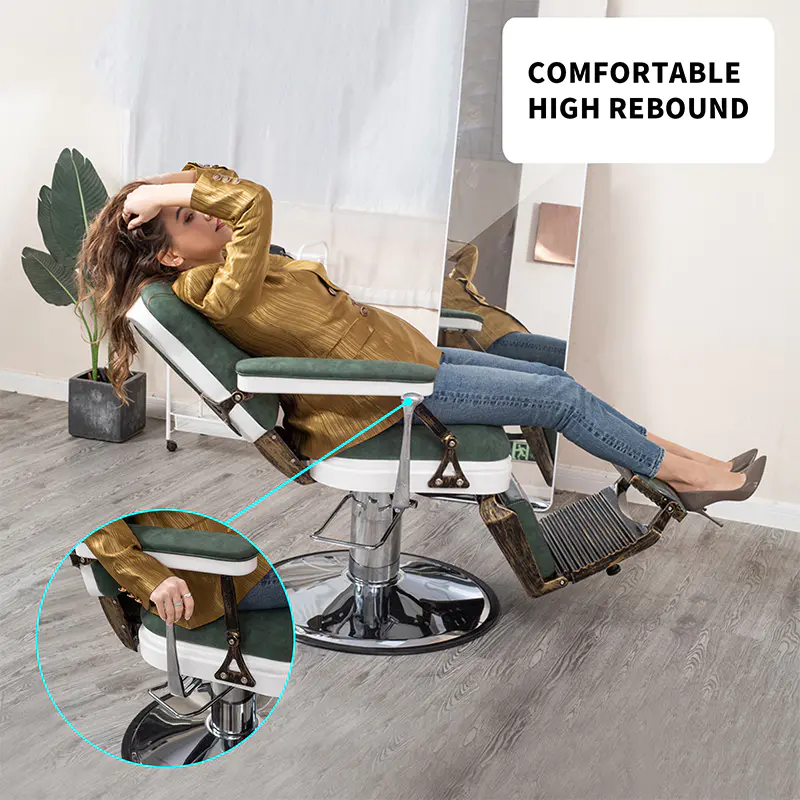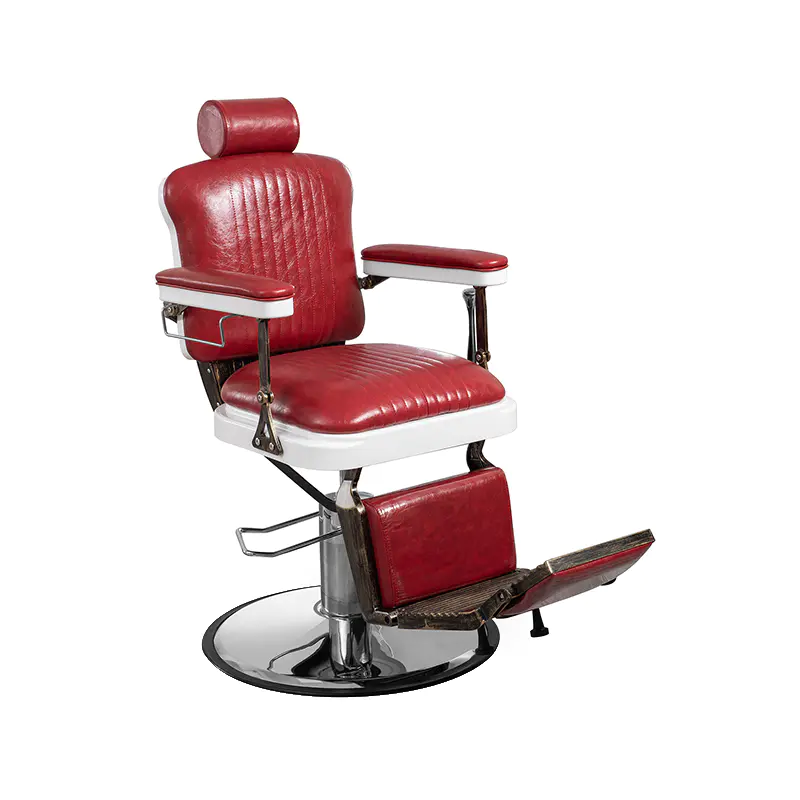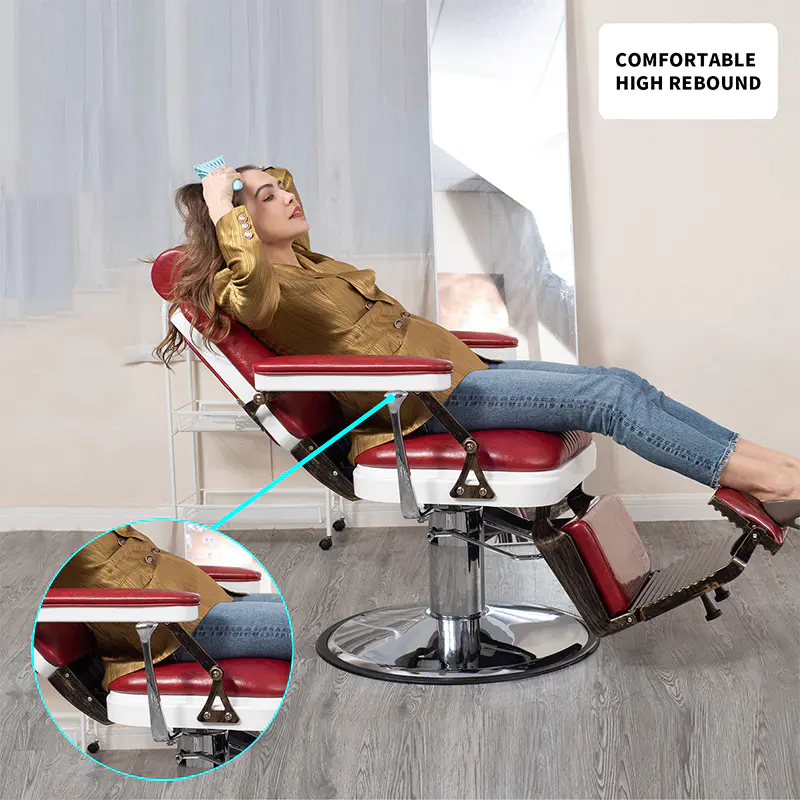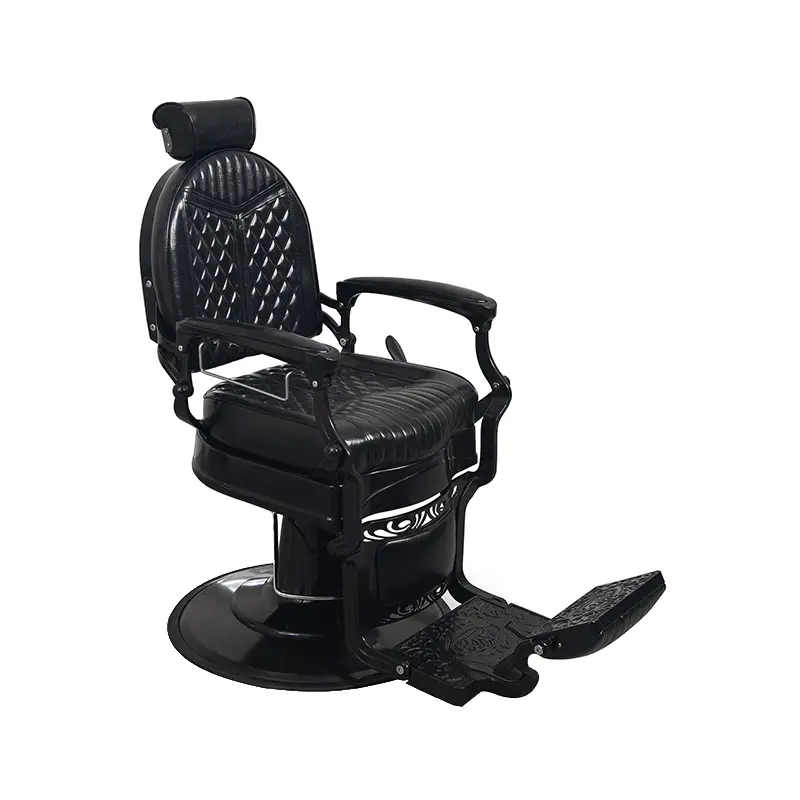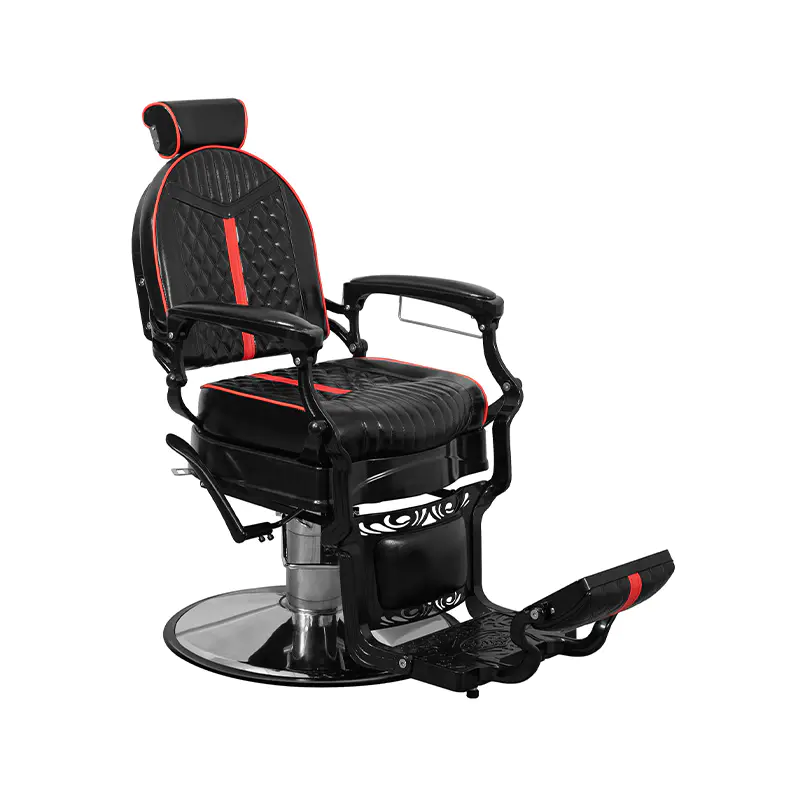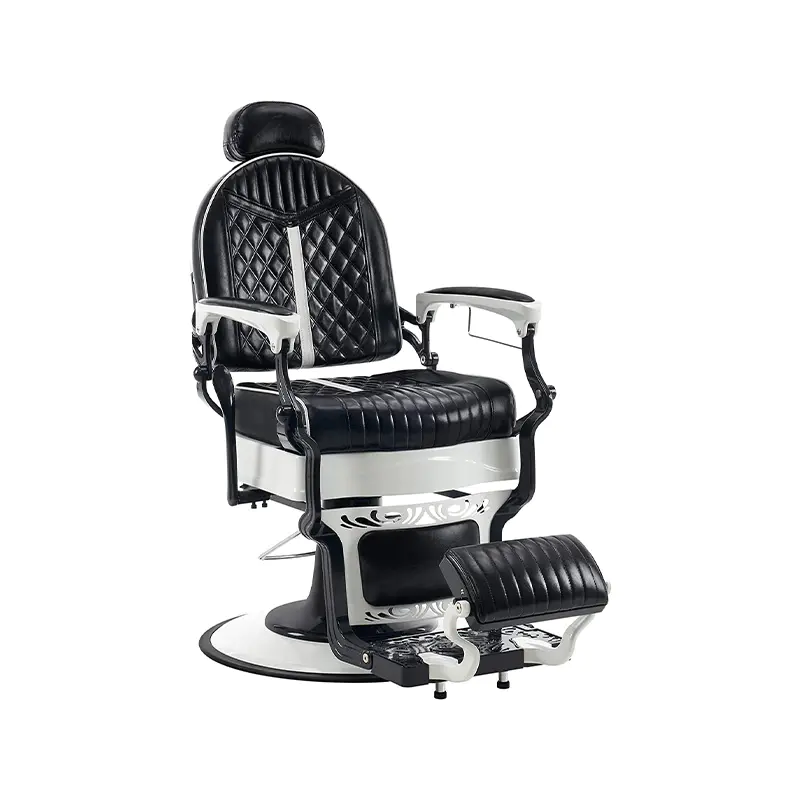1. What is Salon Furniture?
Salon furniture is furniture specifically designed and manufactured for personal care service establishments such as hair salons, beauty salons, and spas. It is far more than just ordinary tables and chairs; it is a complete commercial space solution integrating professionalism, functionality, durability, customer comfort, and branding.
Compared to home furniture, salon furniture prioritizes the specific needs of commercial use, including high-intensity use, public hygiene, workflow efficiency, and creating a specific atmosphere and experience for customers.
(1) Components of Salon Furniture
A fully functional salon typically includes the following core categories of furniture:
Hairdressing Area Furniture
Hairdressing Chair: This is the core feature of a salon. It usually has a hydraulic lifting system, can rotate 360 degrees, and allows for reclining while shampooing. It is the "main battlefield" for hairdressers.
Shampoo Chair/Reclining Shampoo Bed: Customers receive shampooing services here. The design must be ergonomic, providing perfect neck support and a comfortable, relaxing experience when customers lie down. Hair dryer chair: Designed for long-duration drying, hair treatments, and styling, typically equipped with an adjustable head cover, timer, and temperature control, freeing up stylists to serve other clients simultaneously.
Hair salon mirrors and stands: Mirrors allowing clients to observe the styling process; their design and frame style determine the salon's overall visual tone.
Client waiting and lounge furniture:
Reception desk/front desk: The salon's facade, responsible for greeting clients, processing payments, and providing consultations; its design should be eye-catching and reflect the brand's identity.
Waiting chairs/sofas: Provide comfortable seating for waiting clients; their style should be consistent with the salon's overall design language.
Coffee tables/magazine racks: Enhance the functionality of the waiting area and improve the client experience.
Storage and work area furniture:
Tool carts: Mobile storage units that allow stylists to easily carry frequently used tools (scissors, combs, hair dryers, hair clips) to clients, greatly improving work efficiency.
Storage lockers: Used to store products, towels, and staff personal items, keeping the work area tidy.
Mixing Table/Workbench: A workbench specifically designed for mixing and blending hair dyes, typically featuring a chemically resistant countertop and sink.
Beauty and Nail Area Furniture (if applicable)
Beauty Bed: A professional bed used for services such as facials and massages.
Nail Table: A professional workbench with built-in lighting, storage compartments, and hand rests.
Nail Chair/Client Chair: Provides comfortable seating for clients receiving nail services.
(2) Key Features of Salon Furniture
Compared to home furniture, salon furniture possesses the following characteristics:
Professionalism and Functionality:
Designed for specific workflows (e.g., height-adjustable and swivel hair chairs, shampoo chairs with sinks).
Aimed to improve the efficiency and convenience of professionals.
Extreme Durability:
Requires withstanding dozens of hours of high-frequency use daily.
Uses commercial-grade materials such as high-strength metal frames, scratch-resistant composite materials, and waterproof PU leather or vinyl fabrics to ensure a long service life.
Hygienic and Easy to Clean:
This is one of the most crucial differences. Salon furniture surfaces must resist corrosion from chemical products (such as hair dye and nail polish) and be easily and quickly disinfected.
Seamless designs and waterproof materials are commonly used to prevent liquids and dirt from seeping in.
Ergonomic Design: Providing support for employees who stand for long periods (e.g., height-adjustable chairs) and comfort for customers (e.g., shampoo chairs that conform to the neck curve).
Aesthetics and Brand Image: Salon furniture is central to shaping the spatial atmosphere and conveying brand positioning. Whether modern minimalism, industrial style, retro, or luxury, furniture selection directly defines the salon's "personality" and influences customers' first impressions.
(3) Why is investing in professional salon furniture crucial?
Improved Work Efficiency: A well-designed furniture layout and functional design optimize workflows, allowing employees to serve more customers in less time.
Ensuring Customer Experience: Comfortable seating and a smooth service process greatly enhance customer satisfaction, encouraging repeat visits and referrals. Building a Professional Image: High-quality, uniformly designed furniture immediately establishes client trust in the salon and demonstrates a commitment to quality and detail.
Compliance with Safety and Hygiene Standards: Professional commercial furniture design complies with hygiene and safety regulations for public spaces, reducing operational risks.
Long-Term Return on Investment: While the initial investment is higher, durable professional furniture reduces the costs of frequent repairs and replacements, making it a more economical choice in the long run.

2. Analysis of the Functions and Advantages of Ten Major Salon Furniture Pieces
(1) Barber Chair
Function: The barber chair is the heart of salon services, running through almost the entire process of haircuts, styling, and even perming and dyeing. It is the customer's "throne" and the cornerstone for the hairstylist to showcase their creative talents. Its performance directly determines the hairstylist's work status and the customer's core experience throughout the service process.
Features:
Precision Mechanical Structure:The core lies in the hydraulic or pneumatic lifting system, allowing the hairstylist to precisely adjust the chair to the most suitable operating height while achieving 360-degree unobstructed rotation.
Humanized Interconnected Design:The backrest typically has a large reclining function, seamlessly connecting with the shampoo chair behind it, enabling a smooth transfer for the customer from the haircutting position to the rinsing position. This design greatly improves the smoothness of the process.
Commercial-Grade Durable Materials:To ensure it can withstand high-frequency daily use, the internal structure is a high-strength metal frame, covered with waterproof, stain-resistant, and easy-to-clean high-quality PU leather or high-performance vinyl fabric, with reinforced seams.
Advantages:
Ultimate Work Efficiency:Adjustable and swivel functions allow stylists to work easily around customers without frequent bending or circling, minimizing physical exertion and allowing them to focus on their work.
Impeccable Customer Experience:A sturdy base, comfortable backrest, and armrests provide customers with stable support for hours, ensuring a safe and comfortable experience.
A Symbol of Brand Strength:A classic design and solidly crafted barber chair silently proclaims the salon's professionalism and pursuit of quality, forming the first cornerstone of customer trust.
(2) Salon Chair: A Flexible Supporting Role of Function and Aesthetics
Function:As a complement to the barber chair, the salon chair is primarily used for long waits in the perm/dye area, makeup services, or nail services. It is a versatile customer seating option, playing a vital role in enriching the functionality of the space.
Features:
Style-Driven Design:** Its design language is extremely rich, ranging from minimalist metallic lines to the luxury of vintage velvet, emphasizing integration with the overall salon décor. Comfort in Fixation: While typically fixed in height, salon chairs prioritize comfort in terms of seat cushion softness and backrest curve fit.
Advantages: **Style Shaper:By pairing with other furniture, salon chairs powerfully enhance and unify the salon's interior design theme, key to creating specific atmospheres (e.g., industrial, Nordic, Victorian).
Multi-functionality:Their flexibility allows them to easily serve multiple areas of the salon, from the perming and coloring area to the dressing table and even the rest area, achieving efficient resource allocation.
(3) Shampoo Chair: An Immersive Relaxing Head Spa
Function: Designed specifically for shampooing and head care, it aims to elevate the daily act of washing hair into a deep relaxation ritual. It focuses not only on cleanliness but also on the customer's physical and mental comfort while reclining.
Features:Ergonomic Neck Support:The core design element is its meticulously calculated neck curvature and grooves, ensuring complete support for the cervical spine and thorough relaxation of neck muscles when the customer tilts their head back.
Seamless Design: Its length and tilt angle are precisely calculated to perfectly align with wall-mounted or floor-standing shampoo basins, preventing water splashing or backflow onto the customer's neck.
Advantages: Upgrading Service to an Experience: A comfortable shampoo chair allows customers to completely relax, even take a nap, in warm water and with a massage, which has become a crucial element in retaining customers in high-end salons.
Professional Details: A well-designed shampoo chair ensures that the customer's clothes are dry and their body is relaxed during the rinsing process, reflecting the salon's meticulous attention to service details.
(4) Massage Bed: The Comfort Cornerstone of the Professional Beauty Area
Function: The central piece of equipment in the salon's beauty area, used for professional services requiring a reclining posture, such as facials, body massages, waxing, and eyelash extensions.
Features: Multi-Adjustable Design: The professional massage bed allows for manual or electric adjustment of the backrest and leg height to accommodate different services and technician preferences.
Humanized Facial Opening: The headboard features an oval opening, allowing customers to breathe freely while lying prone, while soft padding around the edges ensures comfort.
Advantages: Designed for Professionals: Provides a stable, flat, and adjustable ideal platform for beauty services, forming the foundation for high-quality services.
Ultimate Customer Care: High-quality padding and an ergonomic design allow customers to remain completely relaxed even during one- to two-hour services, enhancing service value.
(5) Pedicure Chair
Function: Elevates pedicures and manicures from simple seated procedures to a comprehensive experience combining comfort, functionality, and entertainment.
Features: Highly Integrated Functions: Integrates massage functions, a multi-angle adjustable backrest, a built-in foot bath, a water spray system, and a tool storage area into one unit.
Technological Enhancement: Many high-end models also feature heating, vibration massage, and built-in sound systems, aiming to provide a holistic sensory experience.
Advantages:
Creating a Spa-like Experience:The pedicure chair itself creates a strong "SPA" atmosphere, making customers feel pampered and valued, thus encouraging them to pay for higher-value services.
Improving Service Flow:The integrated design eliminates the hassle of preparing foot basins and moving chairs, allowing technicians to focus more on the service itself, resulting in a smoother process.

(6) Salon Stool
Purpose: Designed specifically for salon staff who need to stand for long periods (such as hairstylists and nail technicians) to reduce fatigue in the legs, lower back, and back.
Features:
Pneumatic Height Adjustment:This is the core function of the salon stool, allowing users to steplessly adjust the seat height over a wide range using a simple lever.
Mobility and Support: Equipped with silent casters for easy movement; the seat is often saddle-shaped, helping to open the hip joints and promote a more upright posture.
Advantages:
Prevention of Occupational Injuries: Allowing employees to sit down and rest when fatigued, adjusting their posture significantly reduces the risk of occupational diseases such as varicose veins and lower back pain caused by prolonged standing, representing a significant investment in employee health.
Dynamic Work Assistant: The wheeled design allows hairstylists to easily move between tool carts, color mixing tables, and chairs while serving a customer, maintaining dynamic continuity of work.
(7) Salon Trolley: A Mobile Work Platform
Function: Serving as a "mobile workstation" within the salon, it stores and transports frequently used tools and consumables, ensuring everything needed is within easy reach.
Features:
Layered and Partitioned Design: Typically two or three layers, equipped with drawers, dividers, or tool holders for categorized organization of items such as scissors, combs, hair clips, color bowls, and hair dryers.
Commercial-Grade Casters: Equipped with robust and durable casters, ensuring smooth and quiet operation even under frequent pushing and heavy loads.
Advantages:
Efficiency Multiplier:Completely eliminates unnecessary movement by hairstylists retrieving tools, allowing them to focus entirely on the current customer, increasing work efficiency by over 30%.
Maintainer of a Neat Image:All loose tools are neatly stored in the vehicle, keeping the work surface tidy and showcasing the salon's professional management.
(8) Nail Salon Table
Function:Provides nail technicians with a fully functional, easily accessible dedicated worktable, the foundation for meticulous nail art creation.
Features:
Integrated Functionality:** The desktop integrates a shadowless LED light, comfortable hand rest, easily accessible shelves, and storage drawers.
Optimized Size and Aesthetics:The compact design saves space while maintaining a modern and sophisticated appearance, becoming a highlight of the nail area.
Advantages:
Optimized Workflow:All functions are designed around the nail art process, allowing nail technicians to complete all operations without turning around or leaving their seats, ensuring smooth and precise service.
Ensuring Service Quality: Uniform, shadow-free LED lighting is essential for accurate color matching, detailed pattern drawing, and ensuring perfect curing of UV gel, making it a necessity for professional nail art.
(9) Salon Dressing Table
Purpose: After the service, it provides customers with a private space to touch up their makeup, admire their new hairstyle, and finalize their look.
Features: Core Elements: Consists of a large, clear mirror and a countertop or storage cabinet below.
Design Theme: The frame material, color, and shape are key elements in reinforcing the salon's design style.
Advantages: Increased Customer Satisfaction: Providing customers with a private and prestigious space to admire their new look, this final positive confirmation greatly enhances their satisfaction and enjoyment.
Magician of Space and Light: The large mirror effectively reflects light, making the space brighter and more open, and visually extending the salon's area.
(10) Hair Salon Waiting Bench
Purpose: As one of the first pieces of furniture customers encounter upon entering the salon, it not only provides seating for waiting guests but also sets the overall tone and conveys the brand's philosophy—the "first impression."
Features: Design Consistency: Its style, materials, and colors must maintain a high degree of consistency with the reception area and the overall decoration style. Balancing capacity and comfort: While ensuring sufficient seating capacity, the design of seat depth, backrest angle, and other features provides a level of comfort far exceeding that of public seating.
3. Comprehensive Maintenance Guide for Salon Furniture
Salon furniture undergoes high-intensity use daily, coming into contact with chemicals, water, high temperatures, and frequent movement. A systematic maintenance plan not only saves on long-term replacement costs but also reflects the salon's professionalism and hygiene standards.
(1) General Daily Maintenance Principles
These principles apply to almost all furniture in the salon:
Daily Cleaning, Immediate Treatment: After closing, all furniture surfaces must be wiped down to remove hair, dust, and product residue.
Clean stains immediately, especially chemical stains such as hair dye and nail polish, as the longer they are left, the harder they are to remove.
Use the Right Cleaning Agent:
Neutral cleaners (such as diluted soapy water) or specialized cleaners recommended by the furniture manufacturer are recommended.
Avoid using cleaners containing abrasives, strong acids, strong alkalis, or solvents (such as alcohol, acetone), as these can damage leather, coatings, and metal surfaces.
Choose the Right Cleaning Tools:
Use a soft microfiber cloth for wiping; avoid using rough cloths or paper towels to prevent scratching the surface.
For crevices, use a soft-bristled brush for cleaning. Keep dry and well-ventilated: After cleaning, be sure to wipe the surface dry with a clean cloth to prevent moisture from seeping into the interior, causing material aging, metal rusting, or mold growth.
(2) Specialized maintenance by material type
Artificial leather/PU leather (mainly used in barber chairs and shampoo chairs)
Daily cleaning: Wipe with a wrung-out damp cloth and a neutral detergent, then dry with a clean cloth.
Disinfection: Use a dedicated leather disinfectant spray, or a 1:99 diluted household bleach solution (dry quickly). Avoid overuse to prevent the leather from drying out and hardening.
Protection and repair: Apply leather conditioner every 3-6 months to maintain the material's softness and prevent cracking.
Avoid prolonged exposure to direct sunlight to prevent fading and aging.
For minor scratches, use a dedicated leather repair cream.
Stainless steel/metal parts (armrests, supports, tool carts)
Daily cleaning: Wipe with a damp cloth. Removing stubborn stains: Use a stainless steel cleaner to quickly restore shine and form a protective film. Never scratch with steel wool or other hard objects.
Protection: Keeping dry is key to preventing rust. Regular polishing will maintain its appearance and resist fingerprints.
Glass and mirrors (dressing tables, nail salon tables): Wipe with glass cleaner and a microfiber cloth for a shiny, scratch-free finish.
Avoid using abrasive materials to prevent scratches.
Wood/wood veneer (waiting chairs, dressing tables, cabinets): Wipe with a wrung-out damp cloth and dry immediately.
Furniture care spray can be used for maintenance to maintain shine and prevent moisture damage.
Avoid impacts from heavy objects or scratches from sharp objects.
(3) Key maintenance by furniture type
Barber chair/shampoo chair: Hydraulic/pneumatic system: Avoid overloading. If the lifting speed slows down or cannot be locked, contact a professional for repair or replacement of the gas spring. Rotating Mechanism: Regularly check the base screws for looseness to ensure smooth and stable rotation.
Headrest and Crevices: These are often hard-to-reach areas and require thorough cleaning.
Salon Trolley and Tool Cart:
Wheels: Regularly remove hair and fibers tangled in the axles; this is crucial for smooth movement. Replace damaged wheels promptly.
Drawers and Slides: Keep clean and apply a small amount of lubricant periodically to ensure smooth opening and closing.
Pedicure Chair:
Water System: Strictly follow the instructions to use professional cleaning tablets or solutions to regularly descale and disinfect the pipes and inner tank to prevent bacterial and algae growth.
Massage and Electronic Functions: If any malfunction occurs, do not attempt to disassemble; contact after-sales service.
Electrical Components (Heating/Massage Functions of Hair Dryer and Pedicure Chair):
Power Off Cleaning: Always unplug the power cord before cleaning.
Ventilations: Clean the ventilation vents of the hair dryer and other equipment weekly with a vacuum cleaner or soft brush to prevent dust blockage, which can lead to overheating and malfunctions. This is one of the most important safety maintenance procedures.
(4) Develop a maintenance schedule
| Frequency | Maintenance Tasks |
| After Each Use | 1. Wipe surfaces, removing hair and visible stains. 2. Empty and briefly clean the tool cart. |
| Daily | 1. Thoroughly clean and disinfect all furniture surfaces. 2. Clean the floor, especially areas where wheels may pass. |
| Weekly | 1. Deep clean all hard-to-reach areas (crevices, axles, vents). 2. Check for loose screws and proper functioning. 3. Polish and condition leather surfaces (as needed). |
| Monthly/Quarterly | 1. Perform a functional check on mechanical parts (such as the water pipes of the adjustable chair and pedicure chair). 2. Conduct a comprehensive equipment appearance and performance evaluation. |
4. Frequently Asked Questions about Salon Furniture
Q1: Why can't I use home furniture instead of professional salon furniture?
A: Absolutely not recommended. Professional salon furniture is designed for this purpose and features:
Extremely high durability:Withstands high-frequency daily use.
Easy to clean and antibacterial:** Waterproof and chemically resistant fabrics (such as hair dye), with fewer seams for easy disinfection.
Commercial-grade safety:More robust structure, having passed more stringent load-bearing and stability tests.
Professional functionality:Such as the height and swivel adjustment of barber chairs, and the ergonomic neck support of shampoo chairs. Home furniture cannot meet these requirements, will break down quickly, and poses safety and hygiene risks.
Q2: How do I choose the right furniture style for my salon?
A: Follow these steps:
Define your brand positioning:Is your salon high-end luxury, modern minimalist, or retro trendy? The furniture should be consistent with the brand's style.
Determine your core color scheme:First, select 2-3 main color schemes; the furniture colors should coordinate with them.
Consider the space and layout:Measure the space dimensions to ensure smooth passage after furniture placement. For small spaces, choose furniture with high functional integration (such as a vanity with storage).
Inspiration: Read industry magazines, social media, and visit furniture showrooms for inspiration.
Q3: What aspects should I focus on most when buying salon furniture?
A: Focus on the following:
Frame Structure: Prioritize high-strength steel or solid wood frames.
Material: Choose high-quality PU leather, vinyl, or high-performance composite fabrics to ensure they are waterproof, wear-resistant, and easy to clean.
Hardware and Mechanics: Check that the lift pump, casters, hinges, etc., are smooth and stable. Gas springs should have safety certifications.
Warranty Policy: Reliable manufacturers usually provide detailed warranty terms, which reflects confidence in product quality.
Q4: How to effectively clean and disinfect salon furniture?
A: Daily Cleaning: Wipe with a neutral detergent and a soft, damp cloth. Never use abrasive cleaners or solvents.
Disinfection: Use diluted disinfectant (follow product instructions) or dedicated surface disinfectant wipes. For PU leather, after disinfection, wipe it again with clean water and dry it immediately.
Deep Cleaning: For stubborn stains (such as hair dye), use a special cleaner. Perform a deep clean of all hard-to-reach areas at least once a month.
Q5: What should I do if the leather surface of my barber chair or shampoo chair cracks or fades?
A: Minor abrasions can be repaired and restored with leather repair paint/cream. If the damage is severe, it is recommended to contact the furniture supplier or a professional furniture repair service for leather replacement. To prevent problems, it is essential to use leather conditioner regularly (quarterly).
Q6: What should I do if my barber chair is not lifting smoothly or cannot be locked?
A: This is usually caused by a malfunction in the gas spring (gas cylinder). This is the most common wear and tear part of barber chairs.
Solution: First, contact the seller or manufacturer to purchase a replacement of the same specifications. Usually, you can replace it yourself with simple tools. Never disassemble or repair the gas spring yourself, as it contains high-pressure gas.
Q7: What should I do if the wheels of my trolley get tangled in hair and stop turning? A: Prevention: Simply clean the wheels after closing each day.
Solution: Carefully remove hair tangled in the axles using a small hook or screwdriver. If the wheels are damaged, replace them with the same model of caster wheels.
Q8: How does salon furniture ensure customer safety?
A: Professional furniture ensures safety through the following methods:
Stable structure: A wide base and heavy frame prevent tipping.
Load-bearing test: The maximum load-bearing capacity is clearly marked on the product; please do not overload it.
Safe design: Rounded corners prevent scratches from sharp edges.
Q9: How long does a set of high-quality salon furniture typically last?
A: This depends on usage frequency and maintenance level. A set of professional salon furniture from a reputable brand and well-maintained can typically last 5 to 10 years or even longer. Cheap, non-professional furniture may develop serious problems within one or two years.
Q10: Is investing in high-end salon furniture worthwhile?
A: Absolutely. This should be viewed as a strategic investment, not simply a cost.
Because: Reduced long-term costs: Greater durability reduces the frequency of repairs and replacements.
Enhanced customer experience: Comfort and aesthetics directly improve customer satisfaction and loyalty.
Increased employee efficiency and morale: Functionally designed furniture makes work easier and reduces occupational injuries.
Enhanced brand value: High-quality furniture serves as the most direct advertisement for your salon's professional image.

 en
en  English
English русский
русский Español
Español عربى
عربى
